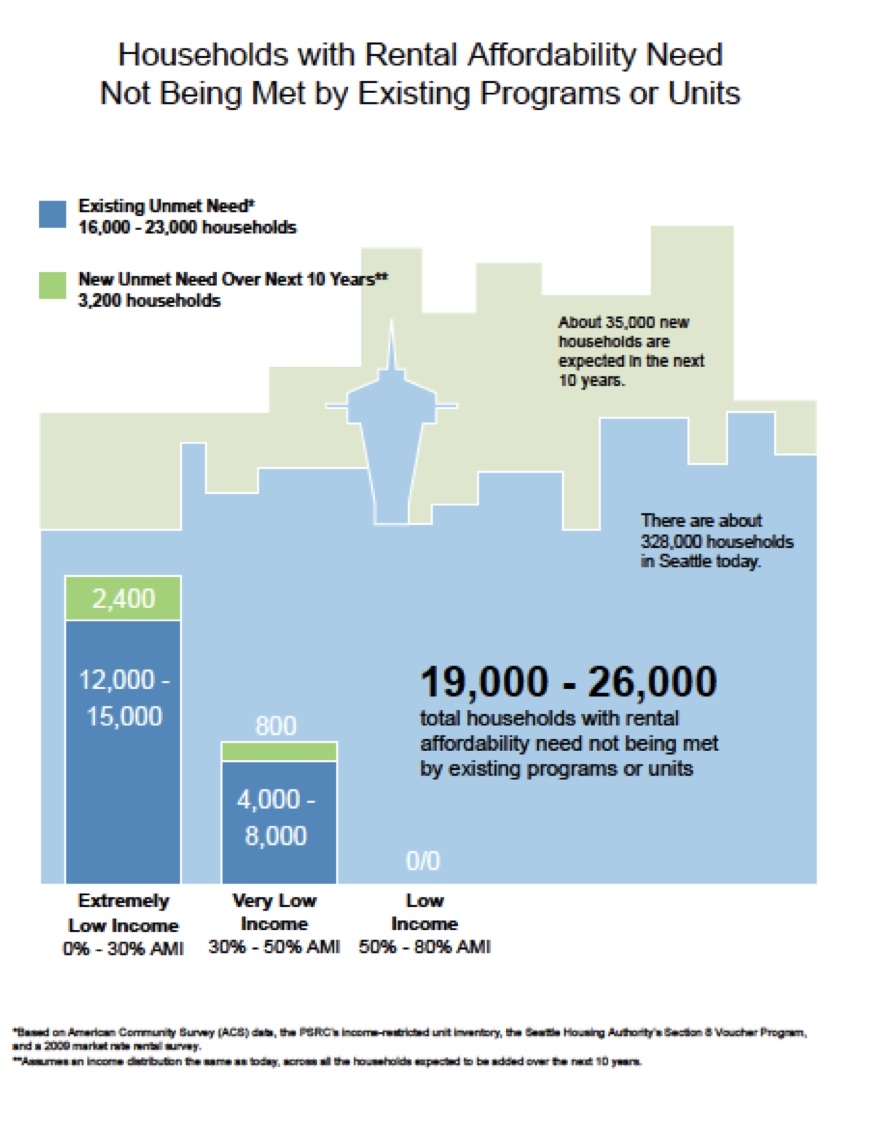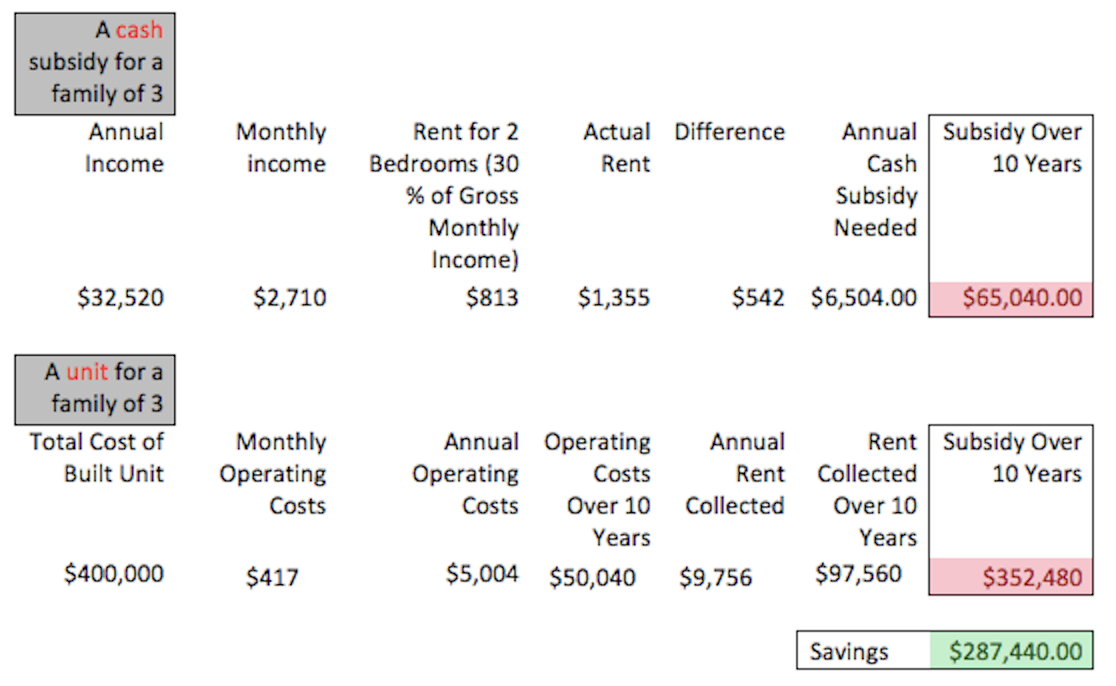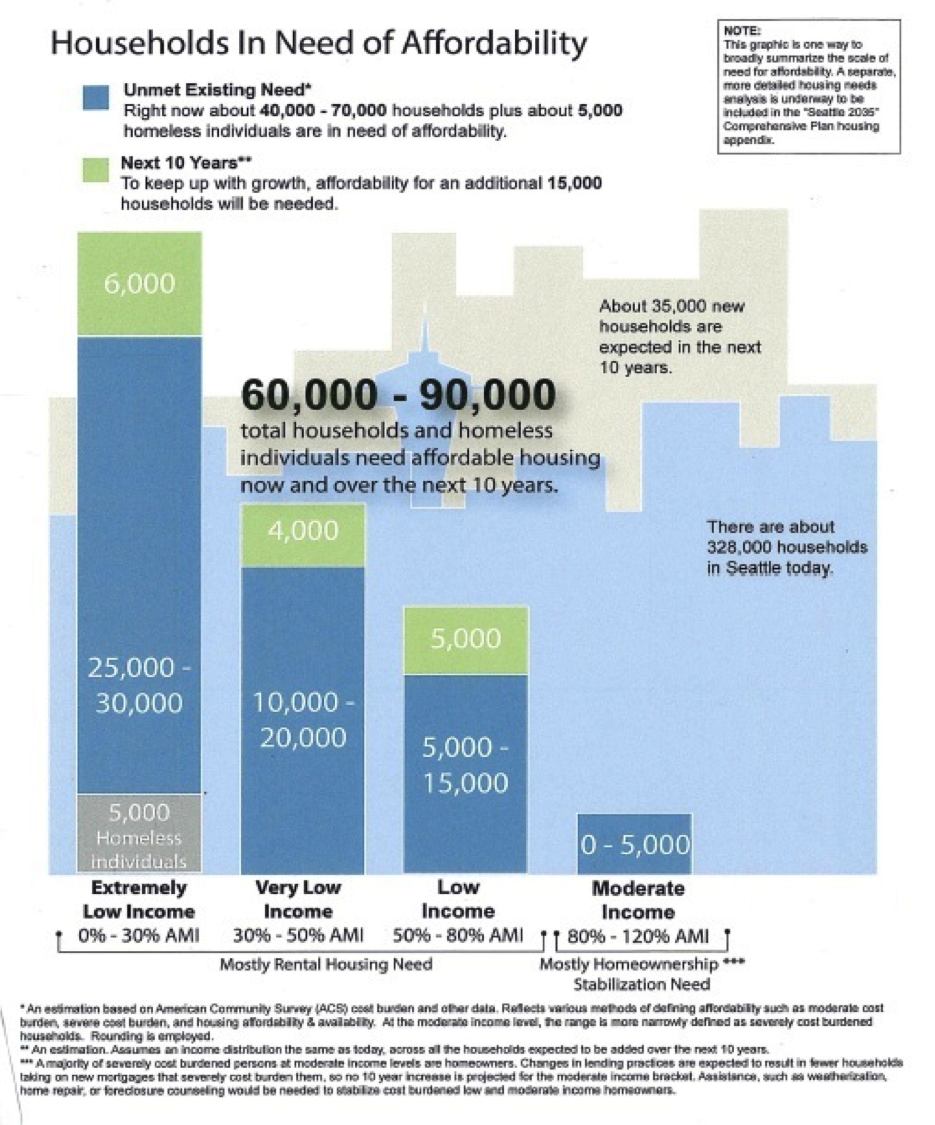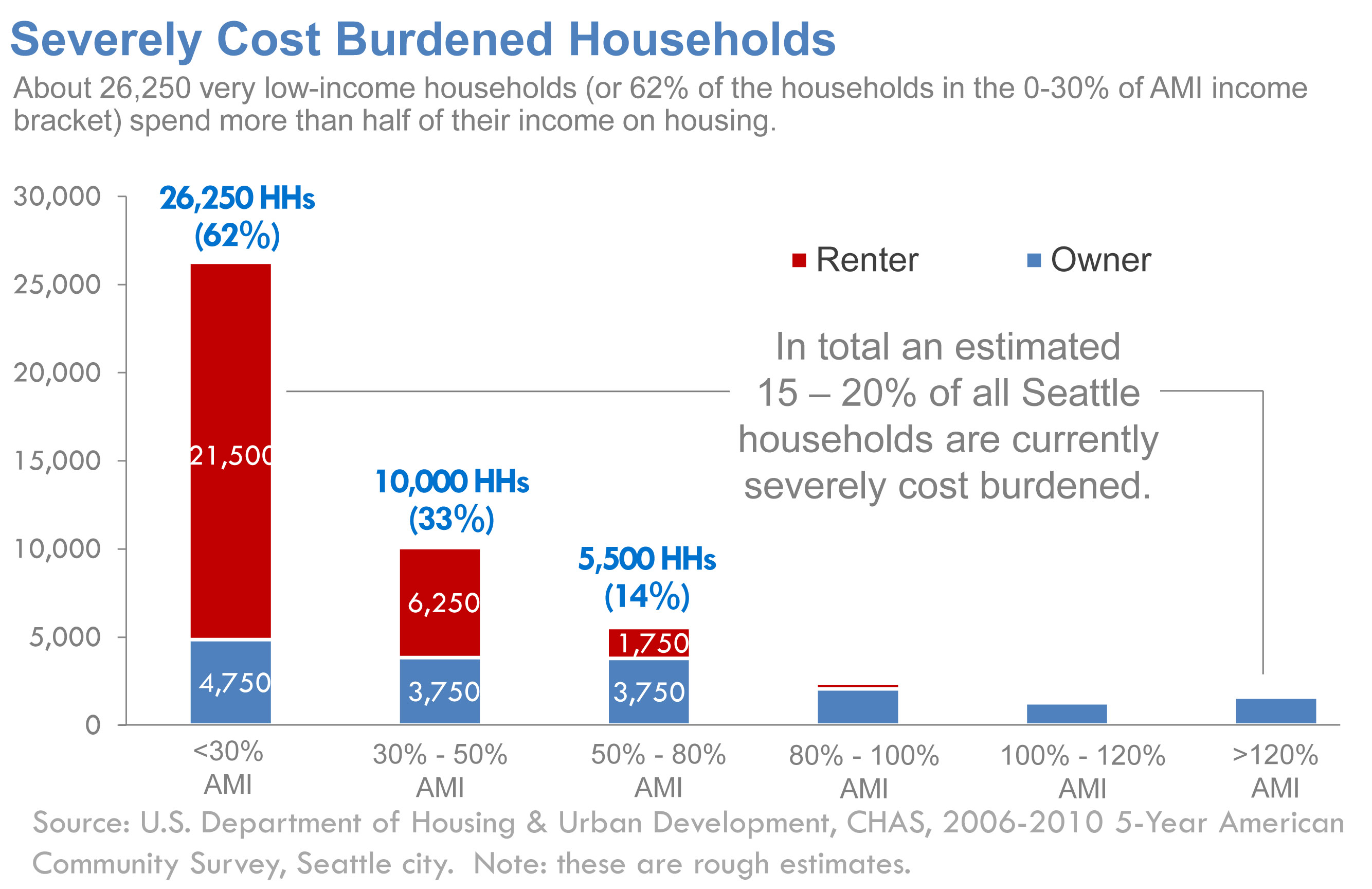More On Cash Payments for Easing Housing Cost Burden
I have a post at Forbes that takes a look at making cash payments to close the gap between what some families pay for housing and what government bureaucrats say they should pay. According to the Department of Housing and Urban Development, a severely cost burdened household pays 50 percent of its income for housing. I compared the cost of making direct cash payments to one household for 10 years versus building a bricks and mortar unit.
That’s a pretty substantial savings. But that’s just one family, right.
According to the City of Seattle, there are more than 26,000 families that earn between 0 and 30 percent of Area Median Income (AMI) paying 50 percent of their gross monthly income on housing. This number is pretty suspect (what’s 50 percent of $0 in gross monthly income) since we already know that the City failed to account for whether those families are in subsidized housing already, if they have vouchers, or exactly what their circumstances are. When we analyzed the City’s numbers two years ago here’s what we saw happen to the households in need:
Then after we accounted for existing subsidies.
 For example, are we worried about a college student paying 50 percent of her income on housing? Or are we more concerned about a family of three working 4 jobs to make ends meet? The City doesn’t ask such subtle questions of the day, they just uses big round numbers. Here’s their latest chart on cost burdened.
For example, are we worried about a college student paying 50 percent of her income on housing? Or are we more concerned about a family of three working 4 jobs to make ends meet? The City doesn’t ask such subtle questions of the day, they just uses big round numbers. Here’s their latest chart on cost burdened.
So I’ll just make up some numbers too. Based on their assessment what if we gave cash payments to all of those 26,000 plus households assuming that they all are at 30 percent of AMI (of course there is a wide range from exactly 30 to 0 AMI).
Wow. Substantially closing the gap between what all those severely cost burdened houses are paying and what they should be paying would cost $113 million annually. But think about it for a minute. As I’ve said before there were two projects that recently came on line after being in the process for years, the 12th Avenue Arts project on Capitol Hill with a price tag of $47 million for 88 units and the El Centro De la Raza project on Beacon Hill which produced 112 units for $45 million. That’s a total of 200 units for $92 million. And each of these projects has long waiting lists, and they will house families with higher incomes that the 30 percent AMI we’re talking about here.
True, these units will be around for a lot longer than a year, but if we use the rough goess of operating costs that are about $5000 per unit, the cost to keep the units operating is at least $1 million per year. And people have taken issue with my numbers saying only the part of the project that is housing should count in the cost. But I have yet to be told that cost per unit isn’t determined by total project cost. I’m always willing to listen to alternative ways of measuring cost.
It is true that to help even a portion of the households bridge the gap would be an enormous outlay of cash each year. But think about how much money the non-profit system spent building just 200 units. Wouldn’t it make sense to give direct help to a family that is already in a unit, but is finding it hard to stay in that unit. As I point out, the cost would be high, but so is building units. It is also true that the actual number of households that would need the assistance is significantly smaller than the City is claiming. Some combination of these approaches is what we need to be more efficient in how we subsidize housing.






